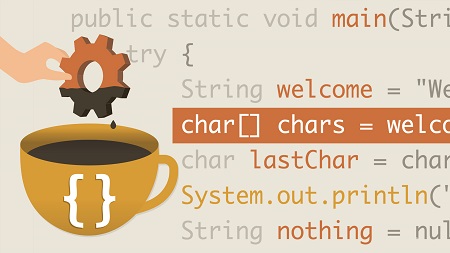
English | MP4 | AVC 1280×720 | AAC 48KHz 2ch | 2h 46m | 467 MB
If you want to build applications for mobile devices, desktop computers, or the web, you need to know Java—and keep your knowledge up to date as the language evolves. Java 9 is changing quite a few important aspects of the programming workflow, particularly the handling of objects and APIs. This course is the second in the Java Essential Training series, which provides the foundation for learning Java 9. Instructor David Gassner starts by showing how to debug Java code in IntelliJ IDEA, and handle any exceptions that occur. He explains how to create custom classes and understand how Java implements inheritance, a core principle of object-oriented programming. Plus, learn how to store data in memory with the Java Collections Framework, extend Java with popular APIs, make network requests, and package your applications for deployment in JAR files.
Topics include:
- Debugging Java code
- Handling exceptions
- Creating custom classes
- Working with inheritance
- Managing data collections
- Using Java packages and libraries
- Preparing a Java application for deployment
Table of Contents
1 Welcome
2 What you should know
3 How to use the exercise files
4 Which version of Java do you want to learn
5 Syntax errors vs. exceptions
6 Debug with IntelliJ IDEA
7 Handle exceptions with try-catch
8 Create multiple catch blocks
9 Checked vs. unchecked exceptions
10 About encapsulation
11 Use the Java runtime classes
12 Wrap code in static methods
13 Declare and use custom classes
14 Organize code with packages
15 Create and use instance methods
16 Manage state with instance variables
17 Declare multiple constructor methods
18 Use static fields as constants
19 Declare and use enum types
20 Organize code with nested types
21 About inheritance and polymorphism
22 Extend classes and override methods
23 Cast objects as different types
24 Create and implement interfaces
25 Use abstract classes and methods
26 Store values in simple arrays
27 Manage resizable arrays with List
28 Manage key-value pairs with Map
29 Work with dates and times
30 Copy files with readers and buffers
31 Copy files with Path and Files classes
32 Parse a JSON file
33 Include packages with modules
34 Document code with Javadoc
35 Package classes in JAR files
36 Next steps
Resolve the captcha to access the links!